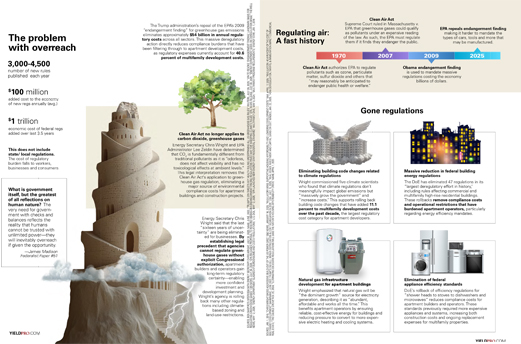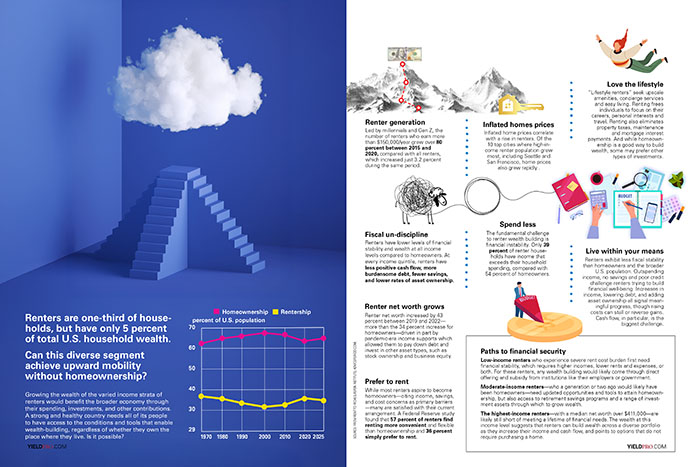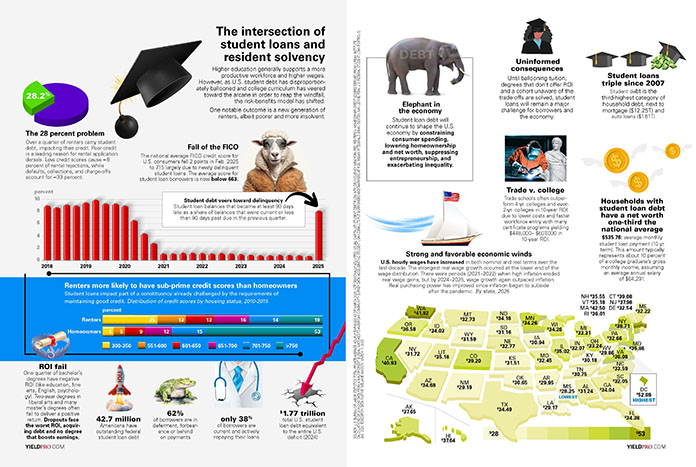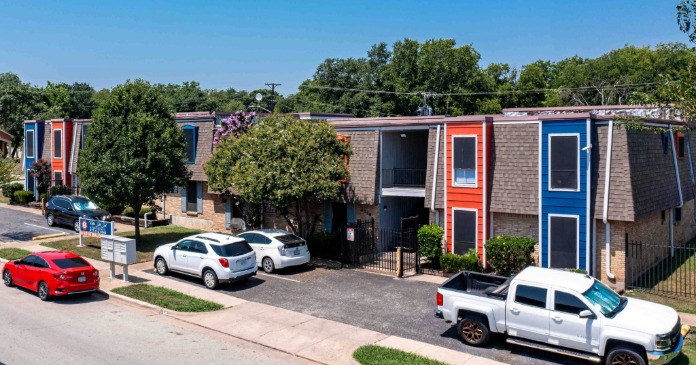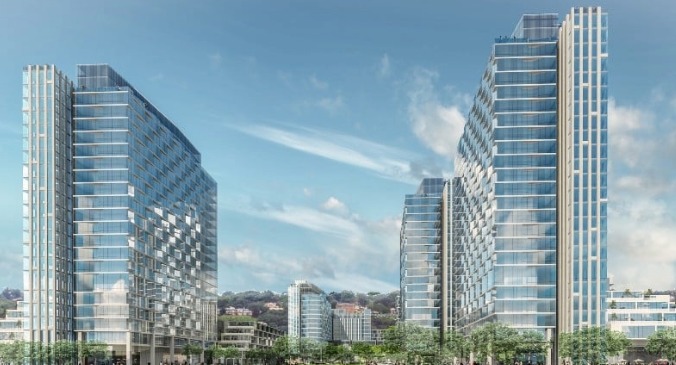3,000-4,500
number of new rules published each year
$100 million
added cost to the economy of new regs annually (avg.)
$1 trillion
economic cost of federal regs added over last 3.5 years
This does not include state/local regulations. The cost of regulatory burden falls to workers, businesses and consumers.
What is government itself, but the greatest of all reflections on human nature? The very need for government with checks and balances reflects the reality that humans cannot be trusted with unlimited power—they will inevitably overreach if given the opportunity.
—James Madison, Federalist Paper #51
The Trump administration’s repeal of the EPA’s 2009 “endangerment finding” for greenhouse gas emissions eliminates approximately $54 billion in annual regulatory costs across all sectors. This massive deregulatory action directly reduces compliance burdens that have been filtering through to apartment development costs, as regulatory expenses currently account for 40.6 percent of multifamily development costs.
Clean Air Act no longer applies to carbon dioxide, greenhouse gases
Energy Secretary Chris Wright and EPA Administrator Lee Zeldin have determined that CO2 is fundamentally different from traditional pollutants as it is “odorless, does not affect visibility and has no toxicological effects at ambient levels.” This legal interpretation removes the Clean Air Act’s application to greenhouse gas regulation, eliminating a major source of environmental compliance costs for apartment buildings and construction projects.
Energy Secretary Chris Wright said that the last “sixteen years of uncertainty” are being eliminated for businesses. By establishing legal precedent that agencies cannot regulate greenhouse gases without explicit Congressional authorization, apartment builders and operators gain long-term regulatory certainty—enabling more confident investment and development planning. Wright’s agency is rolling back many other regulations including climate-based zoning and land-use restrictions.
Regulating air: A fast history
1970 Clean Air Act authorizes EPA to regulate pollutants such as ozone, particulate matter, sulfur dioxide and others that “may reasonably be anticipated to endanger public health or welfare.”
2007 Clean Air Act Supreme Court ruled in Massachusetts v. EPA that greenhouse gases could qualify as pollutants under an expansive reading of the law. As such, the EPA must regulate them if it finds they endanger the public.
2009 Obama endangerment finding is used to mandate massive regulations costing the economy billions of dollars.
2025 EPA repeals endangerment finding making it harder to mandate the types of cars, tools and more that may be manufactured.
Gone regulations
Eliminating building code changes related to climate regulations
Wright commissioned five climate scientists who found that climate regulations don’t meaningfully impact global emissions but “massively grow the government” and “increase costs.” This supports rolling back building code changes that have added 11.1 percent to multifamily development costs over the past decade, the largest regulatory cost category for apartment developers.
Natural gas infrastructure development for apartment buildings
Wright emphasized that natural gas will be “the dominant growth” source for electricity generation, describing it as “abundant, affordable and works all the time.” This benefits apartment operators by ensuring reliable, cost-effective energy for buildings and reducing pressure to convert to more expensive electric heating and cooling systems.
Massive reduction in federal building energy regulations
The DoE has eliminated 47 regulations in its “largest deregulatory effort in history,” including rules affecting commercial and multifamily high-rise residential buildings. These rollbacks remove compliance costs and operational restrictions that have burdened apartment operators, particularly regarding energy efficiency mandates.
Elimination of federal appliance efficiency standards
DoE’s rollback of efficiency regulations for “shower heads to stoves to dishwashers and microwaves” reduces compliance costs for apartment builders and operators. These standards previously required more expensive appliances and systems, increasing both construction costs and ongoing replacement expenses for multifamily properties.
Source: Ben Shapiro’s interview with Energy Secretary Chris Wright, July 30, 2025; NAHB, June, 2022; “Trump’s EPA targets key health ruling underpinning all us greenhouse gas rules,” Reuters, July 29, 2025; “EPA to revoke ‘endangerment finding,’ landmark basis for regulating greenhouse gases,” CBS News, July 29, 2025; “EPA releases proposal to rescind Obama-era endangerment finding regulations paved way for sweeping climate rules,” EPA, news release, July 30, 2025; “Energy department goes on deregulation binge,” The Well News, May 12, 2025; “Energy Department slashes 47 burdensome and costly regulations,” U.S. DOE, May 12, 2025; “EPA launches new energy star residential standard,” Multifamily Dive, May 9, 2024; “Multifamily program requirements,” Energy Star, Jan. 1, 2016; “Chris Wright backs aggressive build-out of the US power grid,” E&E News, January 16, 2025; “Regulatory wins: supporting housing affordability and lowering development costs,” NAA, April 17, 2025; “regulation: 40.6 percent of the cost of multifamily development,” NAHB/NMHC, June 2022; Trump’s tax bill: bonus depreciation & cost segregation in 2025,” CBH, July 15, 2025; “Real estate investment and capital gains on exit,” Windes, Jan. 22, 2025; “How deregulation, tariffs, & immigration impact commercial real estate,” The Cauble Group, Nov. 20, 2024; “Eliminating excessive regulations will ease the nation’s housing affordability crisis,” NAHB, April 1, 2025


